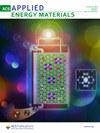利用蛭石堆肥和有效微生物实现小麦抗旱的创新、可持续和环境友好型方法:上调抗氧化防御机制、乙醛酵素系统和渗透调节物质
IF 5.4
3区 材料科学
Q2 CHEMISTRY, PHYSICAL
引用次数: 0
摘要
蚯蚓堆肥含有腐殖酸、营养物质、蚯蚓排泄物、有益微生物、生长激素和酶,有助于植物承受各种非生物压力。有效微生物(EM)包括多种微生物,如光合细菌、乳酸菌、酵母菌、放线菌和发酵真菌,它们可以刺激植物生长,提高土壤肥力。据我们所知,还没有研究调查过蛭肥和 EM 的双重应用在提高植物对缺水的耐受性方面可能发挥的作用。因此,本研究调查了蛭肥和 EM 在缓解干旱引起的小麦变化方面的有效性。实验采用完全随机设计,共设 12 个处理。处理包括对照,以及在三种不同灌溉水平(100%、70% 和 30% 的田间灌溉能力)下单独或联合施用蛭石堆肥和 EM。研究结果表明,施用蛭石堆肥和/或 EM 能显著提高小麦的生长和产量,减轻干旱引起的氧化损伤,减少超氧阴离子自由基和过氧化氢的生成。这是通过提高多种抗氧化酶的活性实现的,包括超氧化物歧化酶、过氧化氢酶、过氧化物酶、抗坏血酸过氧化物酶、谷胱甘肽过氧化物酶、单脱氢抗坏血酸还原酶、脱氢抗坏血酸还原酶和谷胱甘肽还原酶。蛭石堆肥和/或 EM 处理还通过增加抗氧化剂分子(如抗坏血酸、谷胱甘肽、酚类化合物和类黄酮)的含量来增强抗氧化防御系统。此外,经水胁迫处理的植物体内过量产生的甲基乙二醛也受到乙二醛酶系统酶(乙二醛酶 I 和乙二醛酶 II)活性增强的控制。经处理的植物能保持较高的含水量,这与可溶性糖、游离氨基酸、甘氨酸甜菜碱和脯氨酸等渗透调节物质含量较高有关。总之,我们首次报道了蛭石堆肥和 EM 的双重应用通过改善渗透调节物质的积累、调节抗氧化防御和乙二醛酶系统而赋予小麦抗旱性的基本机制。本文章由计算机程序翻译,如有差异,请以英文原文为准。
An innovative, sustainable, and environmentally friendly approach for wheat drought tolerance using vermicompost and effective microorganisms: upregulating the antioxidant defense machinery, glyoxalase system, and osmotic regulatory substances
Vermicompost contains humic acids, nutrients, earthworm excretions, beneficial microbes, growth hormones, and enzymes, which help plants to tolerate a variety of abiotic stresses. Effective microorganisms (EM) include a wide range of microorganisms’ e.g. photosynthetic bacteria, lactic acid bacteria, yeasts, actinomycetes, and fermenting fungi that can stimulate plant growth and improve soil fertility. To our knowledge, no study has yet investigated the possible role of vermicompost and EM dual application in enhancing plant tolerance to water scarcity. Consequently, the current study investigated the effectiveness of vermicompost and EM in mitigating drought-induced changes in wheat. The experiment followed a completely randomized design with twelve treatments. The treatments included control, as well as individual and combined applications of vermicompost and EM at three different irrigation levels (100%, 70%, and 30% of field capacity). The findings demonstrated that the application of vermicompost and/or EM significantly improved wheat growth and productivity, as well as alleviated drought-induced oxidative damage with decreased the generation of superoxide anion radical and hydrogen peroxide. This was achieved by upregulating the activities of several antioxidant enzymes, including superoxide dismutase, catalase, peroxidase, ascorbate peroxidase, glutathione peroxidase, monodehydroascorbate reductase, dehydroascorbate reductase, and glutathione reductase. Vermicompost and/or EM treatments also enhanced the antioxidant defense system by increasing the content of antioxidant molecules such as ascorbate, glutathione, phenolic compounds, and flavonoids. Additionally, the overproduction of methylglyoxal in water-stressed treated plants was controlled by the enhanced activity of the glyoxalase system enzymes; glyoxalase I and glyoxalase II. The treated plants maintained higher water content related to the higher content of osmotic regulatory substances like soluble sugars, free amino acids, glycinebetaine, and proline. Collectively, we offer the first report that identifies the underlying mechanism by which the dual application of vermicompost and EM confers drought tolerance in wheat by improving osmolyte accumulation and modulating antioxidant defense and glyoxalase systems.
求助全文
通过发布文献求助,成功后即可免费获取论文全文。
去求助
来源期刊

ACS Applied Energy Materials
Materials Science-Materials Chemistry
CiteScore
10.30
自引率
6.20%
发文量
1368
期刊介绍:
ACS Applied Energy Materials is an interdisciplinary journal publishing original research covering all aspects of materials, engineering, chemistry, physics and biology relevant to energy conversion and storage. The journal is devoted to reports of new and original experimental and theoretical research of an applied nature that integrate knowledge in the areas of materials, engineering, physics, bioscience, and chemistry into important energy applications.
 求助内容:
求助内容: 应助结果提醒方式:
应助结果提醒方式:


